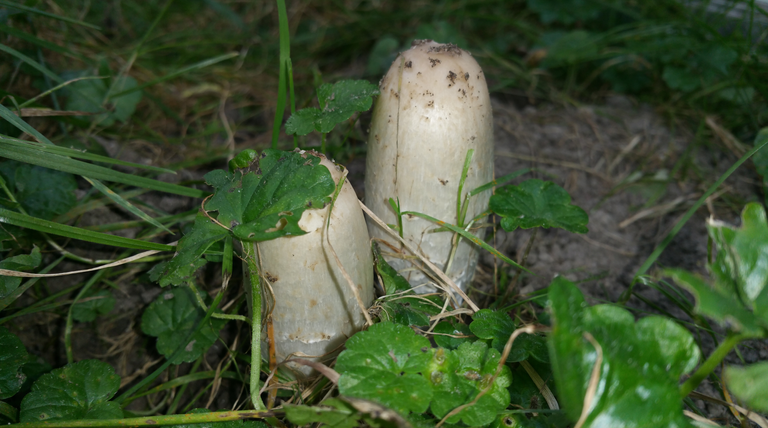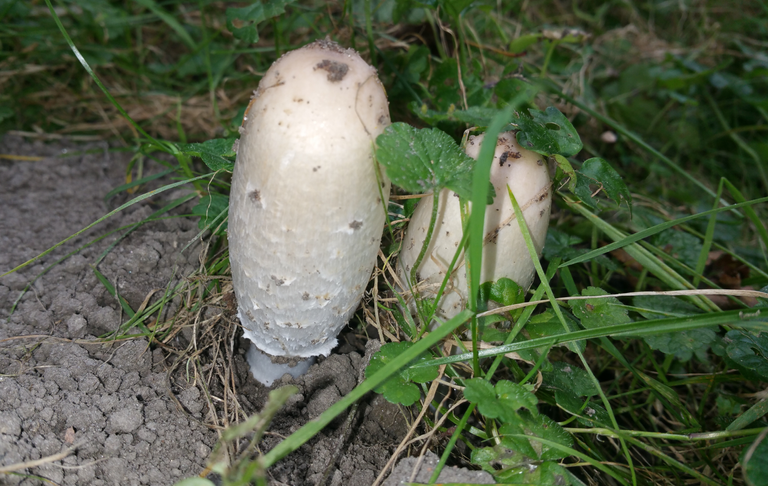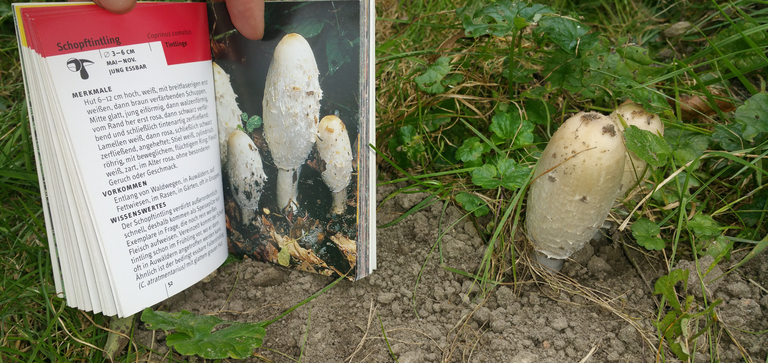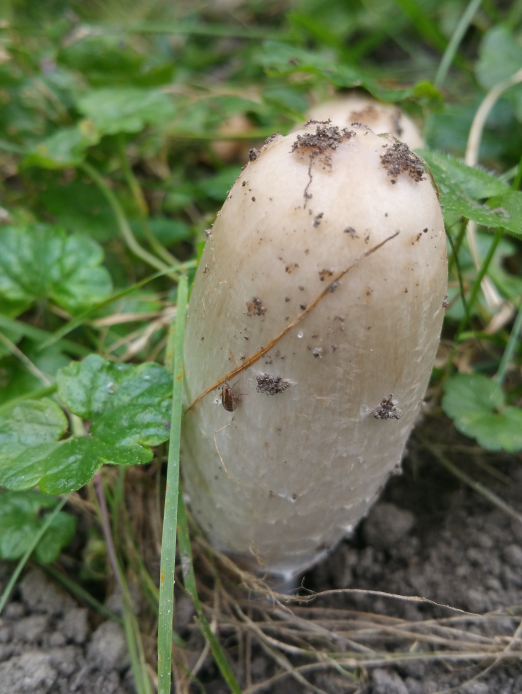(DE/EN) Ist das ein Schopftintling? / Is this a Shaggy Ink Cap?
(Edited)
hey :)
habe heute dieses Exemplar gefunden:
found this specimen today:

Der Gundermann sieht aus wie ein Hut für den linken Pilz :D
The Gundermann looks like a hat for the left mushroom :D

Ist das ein Schopftintling oder eine andere Art von Tintling?
Is this a Shaggy Ink Cap or some other type of?

"Welcher Pilz ist das?" von Kosmos
Zu was kann man den Essen und wie lange habe ich noch Zeit bis er nicht mehr jung ist? 2 Stunden? :D
Hat jemand damit schon Erfahrung gemacht?
"Which mushroom is that?" by Kosmos
To what can you eat the and how long do I have until he is no longer young? 2 hours? :D
Has anyone had experience with this?

~greets
(english translated with deepl.com)
0
0
0.000
Coprinus Comatus is Shaggy Ink Cap in English: they're young and edible when they're paler inside and smell better - they quickly descend into a darker and then rich black-ish colour, when they are less tasty. I would err on picking and eating them in the very earliest stages, and if I remember correctly, they are better cooked than raw - some stomachs might be a little sensitive to them, so need to cook them more. I hope that helps, dear @charlissy !
thank you for your comment!
I'll change directly the English title of the plant :D
have you ever eaten the mushroom?
Certainly: it grows abundantly in both Scotland and Italy - where I grew up and where I live now; as @hive-166168 mentions below, it is a light good flavour - simple and filling.
Important note: I do not have experience of mushrooming in Germany - and as @eddwood mentions below, it might be similar to others which are dangerous: in my own lifelong mushroom learning, I began with studying ALL the similar but dangerous mushrooms that might be like the one I was looking at. The Shaggy Ink Cap is very easy to identify as it ages, but if there are no other specimens around, it might not be clear. Identifying from several books or guides is the best policy: I always cross-reference at least 5 books or more! ;-P I would never harvest for eating unless I was 200% certain - and never take someone's word from a photo identification on the internet - not mine, either - it is only part of the picture: until it is absolutely certain, I would not eat anything. I know Coprinus very well, but in a familiar context: in my early mushrooming years I focussed on the 3 best local funghi which were not easily mistaken, and then researched in-depth about all their familiars (as some mushroom guidebooks tell you).
Ah, in fact, I shared a Hive post once - an Introduction To Picking Wild Mushrooms - if that's of interest - but then noticed that the link is from an old website, ooops!
Good fortune in mushrooming, @charlissy !
it also has a funny English name: 'layer's wig'. and in Russian it is named after manure ;-)
The taste qualities are comparable to the taste of champignon (both species belong to the same family), and require approximately the same degree of processing during the cooking.
Yes, looks very much like it is! If you have other more old and mature editions of it around, you can see their caps turn into black dirt -that would be 100% confirmating sign.
On the other question - how they may be consumed without no harm - descriptions say: its safe as long as it is white, i.e. the decomposing process havent started yet. I never tried myself, since I live in metropolis, no mushrooms are safe to pick up and consume in my area, even if they are confirmed as not toxic and edible.
Welcome to the community!
Thanks for your comment! :)
The mushroom has grown a lot tonight and now has a hat that is black in color. I think from tomorrow the black color will drip from the hat :D
Next to it grow even 2-4 new mushrooms of the same variety.
However, I just watch them now to know how they develop and then eat them possibly next year at the same time.
Do you know if the mushroom is also used for certain healing purposes?
They are very spectacular - in terms of maturing and especially dying. No, they dont have any healing significance as far as I know. They are close to champignons pretty much.
Uh, lass lieber die Finger davon. Ich sammle Pilze seit dem ich 5 jahre alt bin. Also schon über 40 Jahre.
Aber wenn ich diesen Pilz in der jungen Form finde, lasse ich ihn immer stehen.
Es könnte ein Parasol sein, auch wie du sagst ein Tintling,
ABER HALT AUCH WENN ES GANZ DUMM LÄUFT EIN KNOLLENBLÄTTERPILZ.
Ich denke zwar nicht, aber die Dinger wachsen ja auch nicht immer gleich.
Und wenn es dumm läuft, dann bis du ein EX-Hivianer. Das ist der giftigeste Pilz den wir hier in Deutschland haben und es sterben jedes Jahr Menschen daran.
Klar kannst du einen Knollenblätterpilz an der Knoll im Erdreich erkennen, aber sind wir ehrlich, wenn du dich da ein bisschen vertust, ist es vorbei.
Es gibt genug andere wirklich erkennbar essbare Pilze.
Danke für die Info ! :)
Heute sieht er immer noch so aus wie gestern.. Ich schätze, er ist wirklich ein Tintling.
Allerdings geh ich kein Risiko ein.. Beobachte es.. und informiere mich bis ich mir 1000% sicher sein kann.
Bei Pilzen muss man noch detailreicher hinschauen als bei Wildkräuter :D'
Viele Grüße
Ich stimme @eddwood zu. Hätte ihn für einen Parasol gehalten, aber auf keinen Fall gepflückt, obwohl das der einzige Deutsche Pilz ist, den ich esse. Erst wenn er sein Schirmchen ordentlich aufmacht und eben als solcher auch klar und eindeutig zu erkennen ist, pflücke ich ihn.
Nimm lieber das was wir alle gut kennen mit. :-) Wir hätten dich bestimmt noch ein bisschen hier lieber. :-)